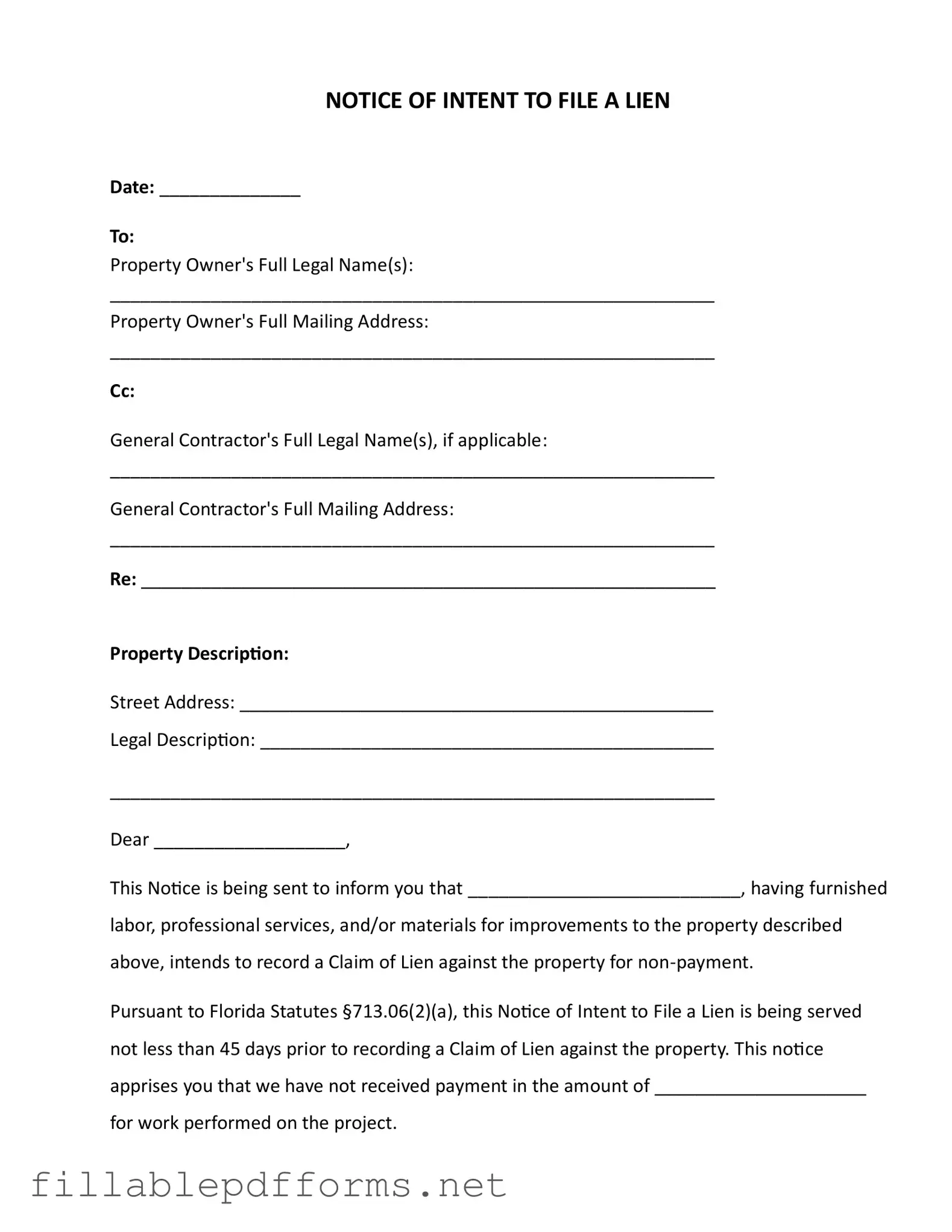The Intent to Lien Florida form serves as a crucial document for contractors, subcontractors, and suppliers who have provided labor, services, or materials for property improvements but have not received payment. This form is designed to notify property owners of the intention to file a lien against their property due to non-payment. It includes essential details such as the date of notice, the names and addresses of the property owner and general contractor, and a description of the property involved. The form also specifies the amount owed for the work performed and outlines the legal implications of failing to respond within a specified timeframe. According to Florida law, this notice must be sent at least 45 days before any lien is recorded, giving the property owner a chance to resolve the payment issue. If payment is not made or a satisfactory response is not received within 30 days, the contractor may proceed with filing a lien, which could lead to foreclosure proceedings and additional costs for the property owner. The form emphasizes the importance of prompt communication to avoid further legal action, highlighting the need for immediate attention to the matter at hand.
